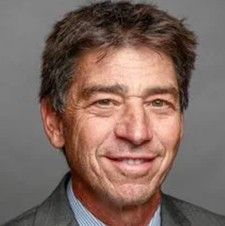Improvements in Histology, Gene Expression in Dupilumab-Treated Patients with EoE
Weekly 300 mg doses of dupilumab were associated with significant, clinically meaningful improvements by week 24 in patients with eosinophilic esophagitis
Marc E. Rothenberg, MD, PhD

Improvements in Histologic Scoring System (HSS) grading and normalized gene expression was observed in dupilumab-treated patients with eosinophilic esophagitis, according to new 52-week data from phase 3 of the LIBERTY EoE TREET Study.
In Parts A and B of the phase 3 TREET study, weekly 300 mg doses of dupilumab were associated with significant, clinically meaningful improvements in symptomatic and histologic outcomes by week 24 in EoE patients, with the biologic being deemed “well tolerated” in patients.
At baseline, the overall HSS score for participants with EoE was -0.76 (P<0.001). Following 24 weeks of dupilumab therapy, the overall HSS score dropped to -0.68 (P<0.0001).
Similar improvements were observed regarding EoE Diagnositic Panel Normalized Enrichment Score (EDP NES) data. Scores were -2.25 (P<0.0001) at baseline and improved to -1.85 at week 24 (P<0.0001).
Yesterday afternoon, new 52-week data was released involving patients who had continued to Part C of the TREET study.
An investigative team led by Marc E. Rothenberg, MD, PhD, of the Cincinnati Children’s Hospital Medical Center, reported on the effect of the biologic on histology and gene expression in patients who participated who experienced 52 weeks of dupilumab therapy.
Efficacy was sustained for 52 weeks in patients who continued to Part C of the study, with the overall HSS grade score remaining at -0.87.
However, changes in EDP NES scores from baseline to 52-weeks were observed, with the overall score at baseline (-2.67) improving to -2.58. Similarly, improvements in type 2 inflammation were also recorded (-1.97 vs. -1.94).
“Normalization of transcriptional signatures by dupilumab may be driving improvements in histologic features of eosinophilic esophagitis,” the team wrote.
In late May 2022, dupilumab became the first treatment approved by the Food and Drug Administration (FDA) for the treatment of EoE in adult and pediatric patients 12 years and older weighing at least 40 kg.
The approval was bolstered by separate phase 3 data on the biologic which indicated that nearly 10 times as many patients treated with dupilumab achieved histological disease remission, with 59% achieving histological disease remission compared to 6% of the placebo group.